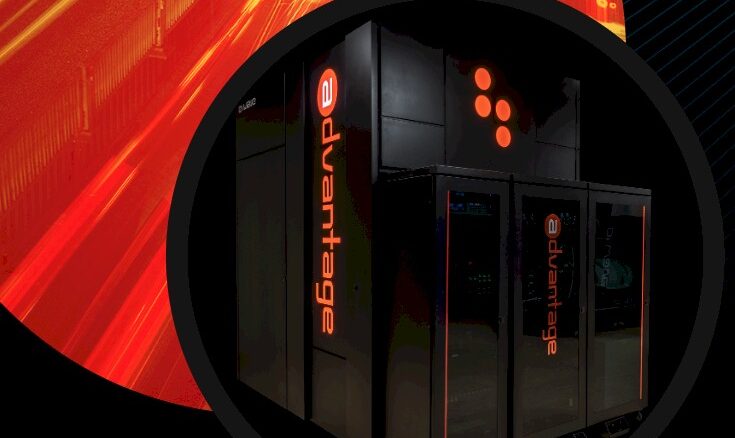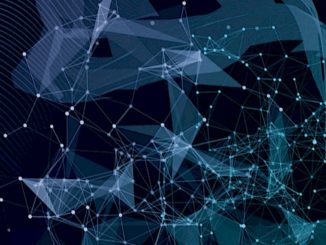
In a panel discussion during GPU Technical Conference a few weeks ago, Nvidia co-founder and chief executive officer Jensen Huang suggested to executives of several quantum computing companies that are calling their systems “computers” may be a misnomer and that a better tag might be “instruments.”
Sitting next to Huang was Alan Baratz, his counterpart at quantum computing company D-Wave, who said he was struggling with the idea.
“I don’t know how to think of a quantum computer as an instrument when it’s being used for materials discovery, when it’s being used for blockchain, when it’s used by NTT Docomo to improve cell tower resource utilization,” Baratz said. “It’s true that there are many kinds of applications I would never try to run on a quantum computer, but for applications that require extensive processing power, these machines are very powerful and go well beyond just instrumentation or measurement.”
Today, Baratz was back on stage, this time at D-Wave’s Qubits 2025 user conference in Scottsdale, Arizona, touting the company’s wins over the past year, laying an aggressive hardware roadmap, and pushing back against “leaders in big tech that simply don’t understand quantum computing and are spewing misinformation into the industry and the marketplace.”
The Quantum Supremacy Debate
D-Wave in early March claimed a small version of its upcoming Advantage 2 annealing quantum system – with 1,200 qubits – had reached “quantum supremacy,” hitting that point when a quantum system can solve a computational problem that classical computers can’t. In an edition of the journal Science, the company it used quantum simulations to compute properties of a variety of magnetic materials of different structures, size, and timescales, solving in minutes a problem that it said would take a traditional supercomputer a million years.
Institutions like the Flatiron Institute in New York City and École Polytechnique Fédérale de Lausanne in Switzerland disputed the findings, arguing the were able to run the same calculations using classical computing technologies.
Baratz pushed back, saying the calculations in the research published in Science were accurate, calling the other papers “overreaching claims.”
Baratz also noted that the Jülich Supercomputing Centre at Forschungszentrum Jülich in Germany in February became the first HPC institution to buy an Advantage quantum system. Previously organizations accessed the systems via D-Wave’s Leap cloud service, but with the acquisition 5,000-qubit system, the vendor also launched a new business selling the annealing quantum systems directly into datacenters. At the same time, D-Wave rolled out a program offering incentives to organizations that wanted to move from another quantum system to one of its Advantage computers.
In addition, the CEO said the company had record bookings last year – pulling in $23.9 million, a 128 percent increase from the $10.5 million in 2023 – and that it will have record revenue in the first quarter this year. In addition, there is more than $300 million in the bank, enough to achieve profitability, he said. D-Wave last year had 135 customers.
The Roadmap Ahead
Such numbers should help D-Wave with a hardware roadmap that Baratz said is accelerating and will start to be seen this year with the release of Advantage2, which 1,200 qubits but will ramp to 4,400 qubits. The current Advantage, of which there are four on the Leap cloud, has 5,000 qubits.
Advantage2 “has more connectivity; each qubit in Advantage2 is connected to 20 others, whereas it’s connected to only 15 others in Advantage,” Baratz said. “This means we can solve larger and more complex problems. We double the coherence time in advantage two over Advantage, which means we can solve problems faster. We’ve increased the energy scale by 40 percent in Advantage2 over Advantage. Energy scale is like the precision with which you can specify problem parameters and that gives us better solutions.”
The next step coming in 2026 will be the Advantage2 Performance update, followed by Advantage3 about two years later and the Advantage3 Performance update in 2030.
Multi-Chips For Quantum
That said, D-Wave has other plans in the works. The company has a goal of 100,000 qubit systems, and Baratz noted that until now, the company has been able to increase the number of qubits by fabricating more of them on the processor, and there is some room to do more of that.
“But to really accelerate growth in the number of qubits, we have to move to multi-chip, interconnecting multiple chips,” Baratz said. “We have aggressively started working on that approach to scaling our systems. But it’s not just about being able to interconnect multiple chips. When we do that, we need to make sure that we are also preserving coherence, and that we’re continuing to increase connectivity.”
The company needs to control these large processors that will have 20,000 to 100,000 qubits with a relatively small number of I/O lines. When Google demonstrated its Willow quantum chip, they used four I/O lines per qubit, Baratz said. With the Advantage system, D-Wave controls 5,000 qubits with 200 I/O lines. Neither is scalable, he argued.
“As we scale to tens of thousands and hundreds of thousands of qubits, we need to be even more efficient with addressing and control,” he said. “And then we need to ensure that as we interconnect the multiple qubits, we are preserving things like quantum properties, entanglement, tunneling across the chips. All of this is a significant focus for us right now.”
Going The Gate-Model Route
D-Wave also is accelerating the work on its program for creating gate-model quantum systems. The company adopted annealing quantum technology years ago because it was easier to work with and allowed it to get to market faster than competitors. However, the technology is best used for optimization tasks, while gate-model systems have a wider range of use cases. Most companies, from Google, Microsoft, and Amazon to smaller firms are focused on gate-model quantum, which still years away from producing a useful quantum system.
Baratz said D-Wave needs to demonstrate that it can modify the cryogenic control it uses for the annealing systems to control gate-model qubits. Relatedly, D-Wave researchers are looking into integrated analog-digital computing, which would give the annealing systems the ability to process some gate-model gates.
“This is going to give us a tool to be able to further improve how we perform on optimization problems by giving us another vehicle to escape local minimum,” he said. “It gives us one other thing, and that is the ability to read out in more than one basis, which is foundational for … things like provability with respect to hard computational problems.”
At the show, the company said it updated its hybrid quantum nonlinear solver to support continuous variables with linear interactions, which grows the number of problems it can address, including budget allocation and resource distribution.









Be the first to comment